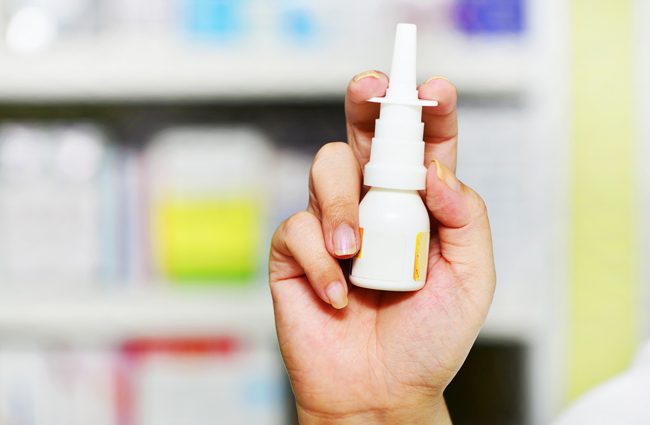An Overview
Deaths from opioid overdose have been at record levels in recent years. As a result, there has been more interest in ways to prevent deaths from overdoses. Narcan is the solution currently in use. Narcan is the trademark name for the drug naloxone hydrochloride, a prescription medication used to reverse overdoses from opioids of various types.
Narcan comes in several different forms, including a vial from which the drug must be drawn up into a syringe, ready loaded cartridges, and a nasal spray. Of these options, the nasal spray is the easiest to use and requires no special training.
Narcan can help to reverse overdoses from:
- Heroin
- Morphine
- Oxycodone
- Methadone
- Fentanyl
- Hydrocodone
- Codeine
- Hydromorphone
- Buprenorphine
Opiates and the Brain
To understand how Narcan works to reverse overdoses, it helps to first understand some basics about the brain and how opiates impact its functioning. Human brains have receptors, which are like little receivers, waiting to take in chemicals that impact how the person feels and also regulate certain actions a body does on its own, such as breathing and making the heart beat.
Our bodies create different chemicals, depending on what is happening in a given moment. For example, when exercising, in love, or eating chocolate, the brain creates endorphins, which are “feel good” chemicals. When a danger is present, the brain creates adrenaline, which can sharpen focus and trigger a fear response, so that a person can escape or fight off whatever is endangering their safety.
The receptors that make up our “pleasure center” are the same ones that are impacted by drug and alcohol use. Opiates mimic the effects of endorphins, but do so in such a manner that the human body comes to prefer the opiate over the endorphins the body makes itself. This is largely because the opiates create a greater pleasure response than the chemicals the body can make. Eventually, the body can no longer experience pleasure from its own endorphins because they are too weak for the brain to sense anymore. This is how the brain becomes dependent on drugs.
The Brain During Overdose
Above, there was a line about the receptors taking in chemicals that cause pleasant feelings and also those regulating breathing and heart beats. In an overdose, the receptors can become so clogged by feel-good chemicals that the signals needed to continue to live struggle to get through. Breathing, heart rate, and other important functions can become dangerously slow or stop.
Narcan to the Rescue
Thanks to Narcan, a person overdosing from any of the opiates listed at the top of this article can potentially be saved. When Narcan is administered to a person who is overdosing, the Narcan will knock the opiate off of the receptors. The receptors are then free to do important, life-preserving tasks like telling the body to breathe and the heart to beat.
Unfortunately, when Narcan knocks the opiates off of the brain’s receptors, it may cause the person to feel like they did not use the drug in question. In some cases, they can be thrown straight into withdrawal, which is extremely unpleasant for people who are addicted to opioids.
It’s Not Over Yet
According to Narcan.com, “Narcan is used for the treatment of an opioid emergency or a possible opioid overdose with signs of breathing problems and severe sleepiness or not being able to respond. Narcan is to be given right away and does not take the place of emergency medical care. Get emergency medical help right away after giving the first dose of Narcan, even if the person wakes up because symptoms may return. Repeat doses may be necessary.” Not only can Narcan potentially trigger withdrawal symptoms in people who are saved from an overdose, but the most potent opioids, such as fentanyl, may require a higher degree of intervention than one or two doses of Narcan. It is important to always get someone who has been experiencing an opioid emergency or overdose to professional medical care as soon as possible. There is no risk of administering too much Narcan. It will not do anything aside from removing opiates from the receptors, so it will not do anything to a person who has not had any opiates. It will only unclog the receptors that normally bond to endorphins or opioids for someone experiencing an overdose.
How to Obtain Narcan
In a 2018 Time Magazine article, the U.S. Surgeon General, Dr. Jerome Adams, is quoted as saying that more Americans should carry and learn to use Narcan, including community members, family and friends of people using opioids, and individuals using the drugs themselves. To make it easier for people to obtain Narcan, the Time article states, “Most insurance plans cover naloxone, and many community-based organizations or public health programs provide the drug for free. When buying naloxone, the price can vary greatly depending on your insurance plan and the type you want to buy. Generic naloxone can cost between $20 and $40 per dose, while Narcan can cost around $130 to $140 for a kit that includes two doses.” Most states have passed laws in recent years which allow for Narcan to be obtained without a prescription or with a standing order. Ultimately, Narcan cannot save any lives without people who are willing to carry and administer it. State governments, insurance companies, pharmacies, and many other organizations are actively trying to get Narcan into the hands of as many people as possible while continuing to stress the need for comprehensive addiction treatment programs such as those offered at Fair Oaks Recovery Center.



